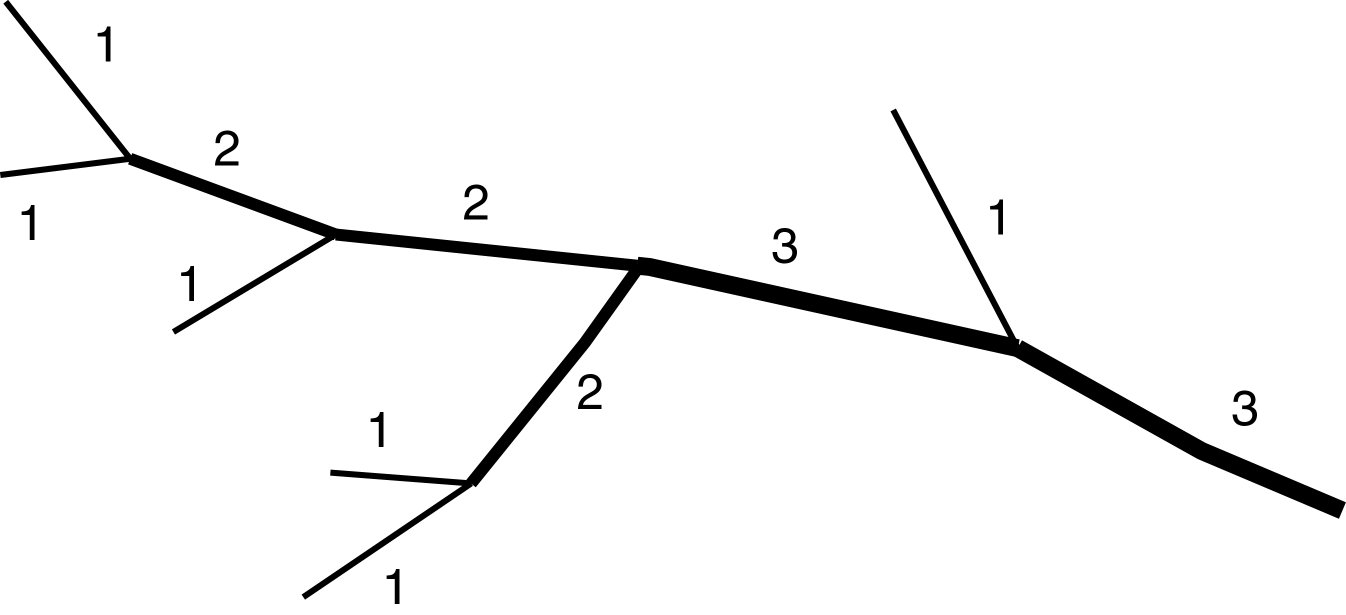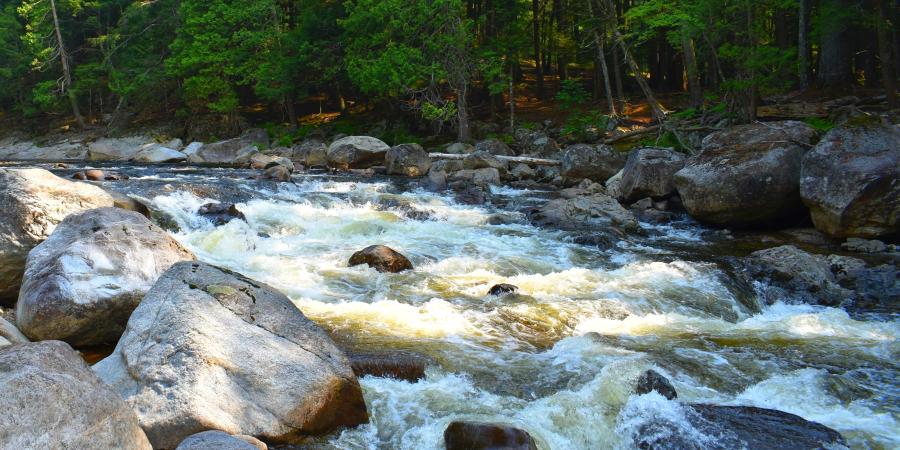Strahler stream order is used in hydrology and geomorphology to classify the hierarchy of a river's tributary network. Although variations of the concept existed since at least the early 20th Century, the most commonly applied method to characterize stream order was modified from pioneering hydrologist Robert Horton by Arthur Strahler and described in his classic 1957 paper titled "Quantitative Analysis of Watershed Geomorphology."
As with earlier variations of the stream order concept, it provides a way to characterize the branching patterns of river systems. Strahler stream order is based on the concept that when two streams of equal order meet, they form a stream with an order one level higher.
Here's how the Strahler stream order is determined:
- The smallest, unbranched streams are designated as first-order streams. These are sometimes referred to as headwater streams.
- When two first-order streams meet, they form a second-order stream.
- When two second-order streams come together, they create a third-order stream, and so on.

Illustration of the Strahler stream order system by Langläufer (2006, CC-BY-SA 3.0)
The stream order increases as tributaries join together, reflecting the hierarchical structure of the river network. The highest stream order is found on the main stem of the river in the downstream portion of the watershed.
Support our river restoration work for clean water and healthy streams. Give with confidence today!
Using this classification system in the Ausable watershed, we can summarize the following about stream order:
- The Ausable River below Au Sable Forks is a 6th order stream.
- The East Branch and West Branch are both 5th order streams.
- There are four 4th order streams in the watershed: Johns Brook, Styles Brook, Chubb River, and Black Brook.
- There are no 4th order tributaries downstream of Au Sable Forks.
The remaining streams within the Ausable watershed are all 1st, 2nd, and 3rd order streams. The map and diagram below illustrate the distribution and total length of stream order classes within the Ausable watershed using data from the U.S. Geological Survey's National Hydrography Dataset.

Map showing the Ausable River watershed and its network of tributaries drawn according to their Strahler stream order classification.

The total length of streams in the Ausable watershed by Strahler stream order. The solid blue "best-fit" line shows the relationship between the two variables expressed by the equation on the diagram.
Classifying Strahler stream order provides a baseline for further scientific analyses of river landscapes. Streams with the same order often share similar charactersitics within the same region. Knowing the stream order of a particular tributary gives scientists a framework for anticipating the stable channel dimensions or the composition of the biological community that might be present within that system. It is not only a convenient way to classify and analyze river networks, but it also aids in our understanding of hydrologic, geomorphic, and ecological processes that occur from the headwaters to the outlet of the basin.
Story by Gary Henry, Stream Restoration Manager.
Sign-up for our e-newsletter to get weekly updates on the latest stories from the Ausable River Association.


